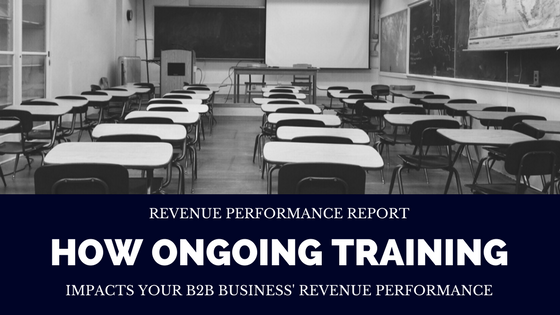Read time: Less than 3 minutes.
Each employee impacts your business’ revenue performance. Your organization is the products and services it offers — and even more so the people who help grow and deliver your value to the hands of your target client.
When you invest in your people, you are investing in your revenue performance. Although many leaders value their employees’ continued growth, they often struggle to justify investing in that growth on a continual basis.
Question the value of ongoing training no further.
- Companies that invest in comprehensive training programs have 24% higher profit margins than those who spend less on training (Association for Talent Development).
- Employers who provide continuous training have 218% higher income per employee than those with less comprehensive training (Association for Talent Development).
- Engaged employees outperform those who are not engaged by up to 202% (Dale Carnegie).
But do not waste your resources with training that will not make an impact. Be strategic with your training programs and realize sustainable revenue performance.
Implementing effective growth starts from the top.
In order for training to be effective, you must know what is broken. Even if it is not broken per se, you must understand where employees struggle, where they are less efficient, what areas are constantly changing and creating challenges.
Know your teams well enough to understand what your employees need to do their jobs better. This is an ongoing effort and requires you to revisit your different teams often. Learning and growing should be integrated into the rhythm of your role, as well as theirs, rather than pushing it off to a yearly session your employees snore through.
Also, as a business leader, you act as a model for your employees. Change starts at the top — and even more so behavioral change that delivers more desired outcomes. If you want to see your team improve, you need to adapt your own actions and constantly strive for growth and improvement as well. Take note from Ben Franklin’s five-hour rule, and you’ll be among many other business leaders such as Bill Gates, Warren Buffet, Elon Musk and Oprah Winfrey.
Not all training is equal.
Business leaders may have invested in training in the past, only to be disappointed by the results, or rather the lack thereof.
Not all training is equal. Take sales training, for example.
- Good sales training involves industry updates, new tools or process alerts.
- Great sales training enables the sales team to learn new ideas that are absorbed as a team.
- Exceptional sales training enables sales teams to learn new methods and techniques, and challenges them to practice (role-playing) time and again until positive change can be measured.
LEARN MORE ABOUT SUCCESSFUL SALES ENABLEMENT
With exceptional employee training, you should focus on how professionals are performing their duties and address the weaknesses in order to lead positive, measurable change. And with that measurable change comes sustainable revenue performance for your B2B organization.









